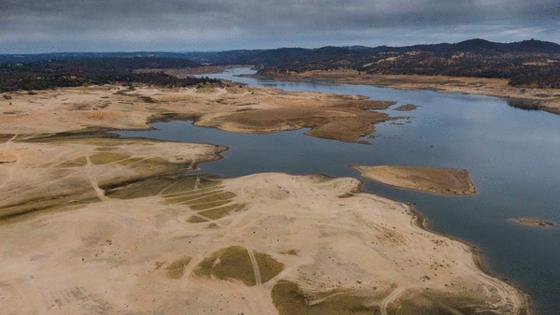'Expect extremes': California officials warn of severe wet–dry swings
Published in News & Features
California heads into the new water year facing continued risks from climate-driven extremes, the California Department of Water Resources said on Tuesday.
In a briefing held virtually on Tuesday afternoon, the department said the state is expected to see “big swings” in weather patterns between large storm events and long, intense dry periods — conditions that are seen as “new normal” for California’s water management — over the next 12 months.
“Bottom line, expect extremes — dry periods interrupted by larger, long-lasting atmospheric river conditions,” Michael Anderson, a state climatologist at the Department of Water Resources, said during the briefing.
According to Anderson, the onset of a La Niña climate pattern adds uncertainty to California’s weather outlook, since it can result in extremes in either direction, from prolonged dry spells to rapid sequences of intense winter storms, with conditions expected to peak just before the calendar year ends.
“It can also be those years like 2013 and 2022 where we started strong (heavy storms), but come the New Year, everything shuts off … or whether we get those events like 2023 where you can get winter in three weeks.”
Climatologists around the world have linked extreme swings between drought and deluge to the effects of climate change, with California’s own state scientists noting “larger swings between wet and dry periods” in recent decades consistent with climate change patterns. The devastating Hurricane Helene that struck western North Carolina, for example, was followed by one of the state’s driest Octobers on record.
Anderson also noted that while major reservoir levels are “slightly above average” for this time of year, groundwater remains under stress, with about 27% of monitoring wells below average and 53 dry wells reported.
Meanwhile, Karla Nemeth, director of the Department of Water Resources, said federal staff cuts are being felt in water management through affected operations such as snow course measurements, stream monitoring and National Weather Service forecasting.
“We are doing our best with our staff to sort of bridge the gaps the best we can. But there are gaps,” said Laura Holland, deputy director of Flood Management and Dam Safety with DWR.
In the event of a government shutdown, “critical positions” for operators of the Central Valley Project would remain in place, Nemeth said, though many of the staff the department works with on a day-to-day basis would be unavailable.
_____
©2025 The Sacramento Bee. Visit sacbee.com. Distributed by Tribune Content Agency, LLC.







Comments